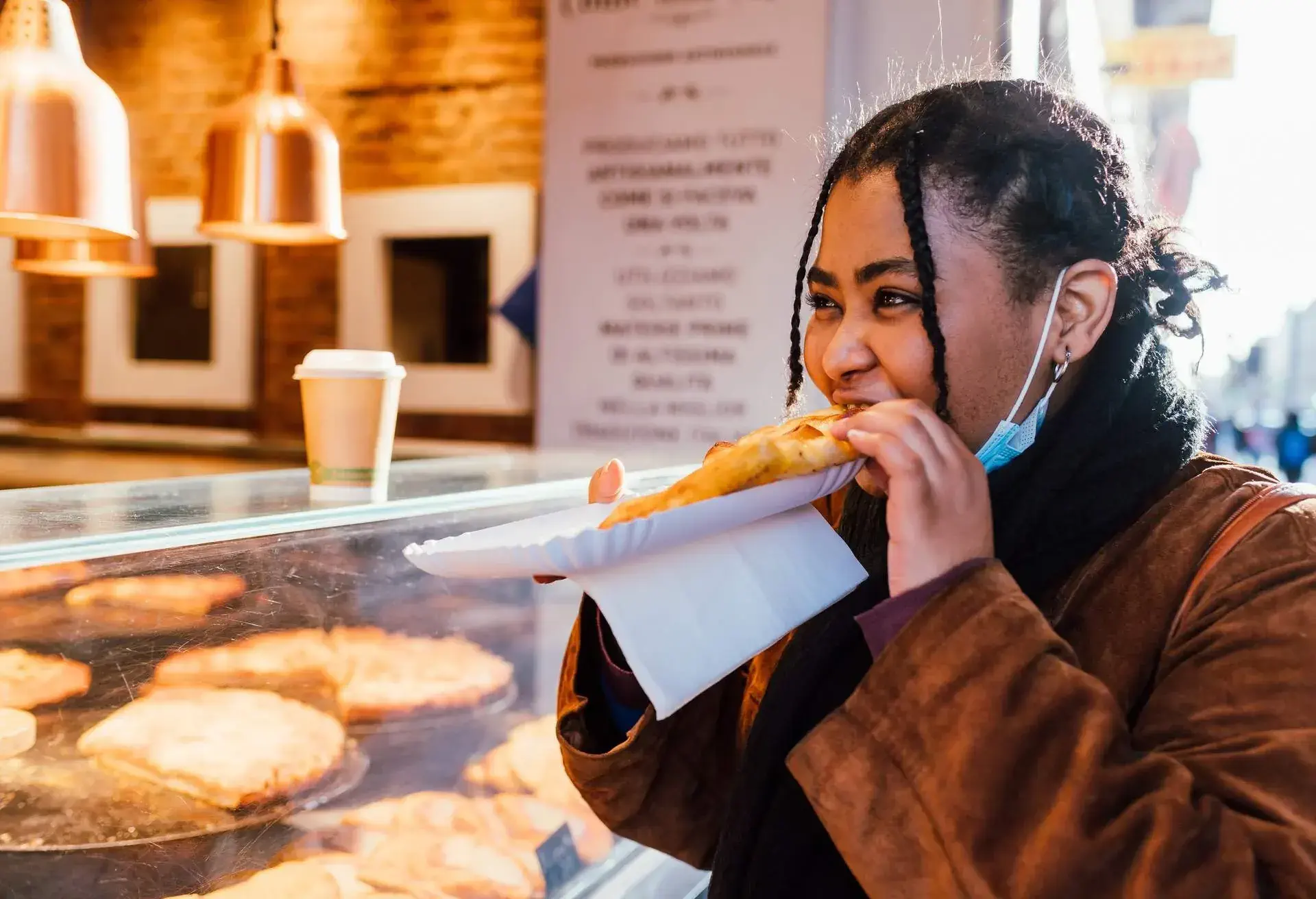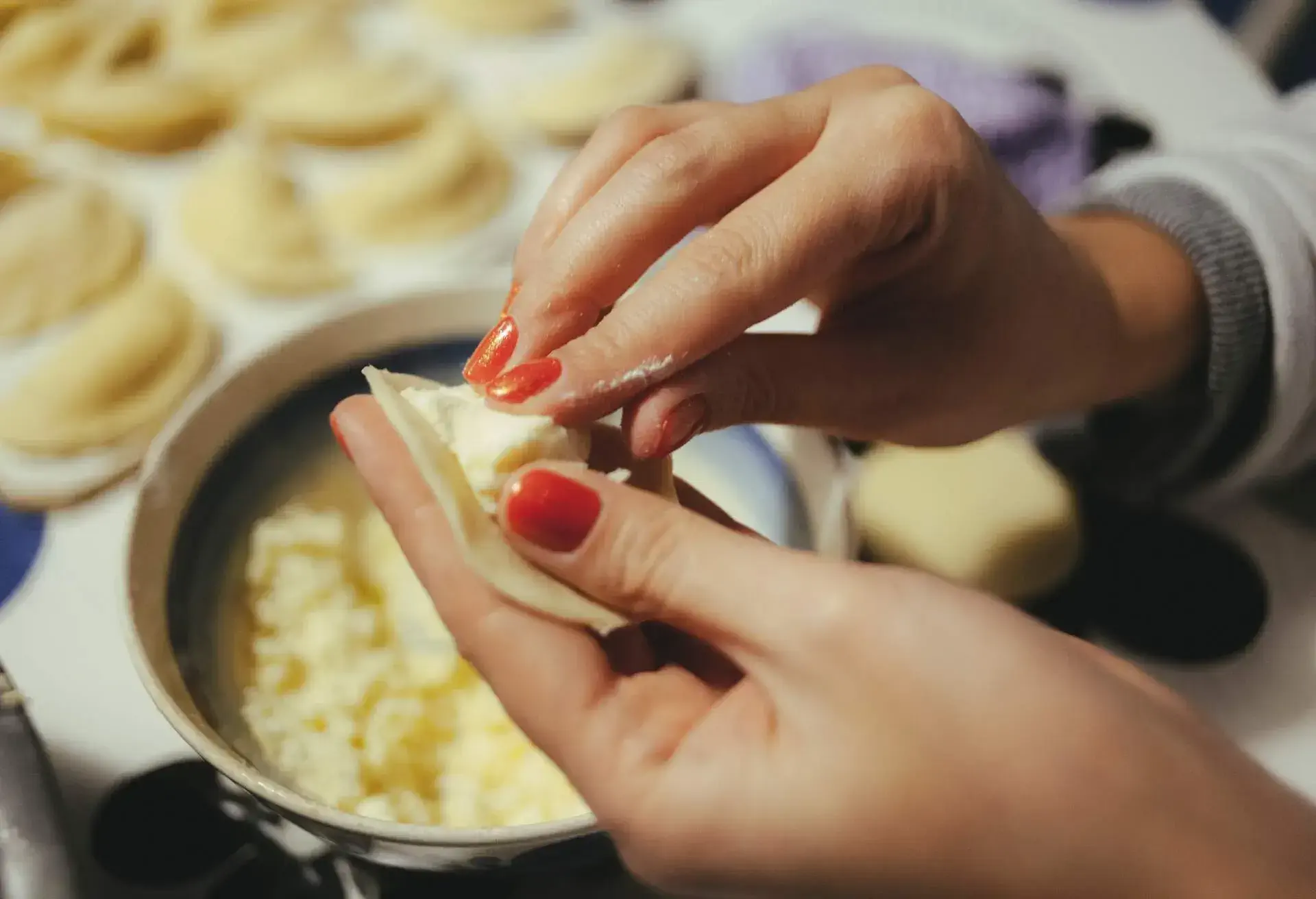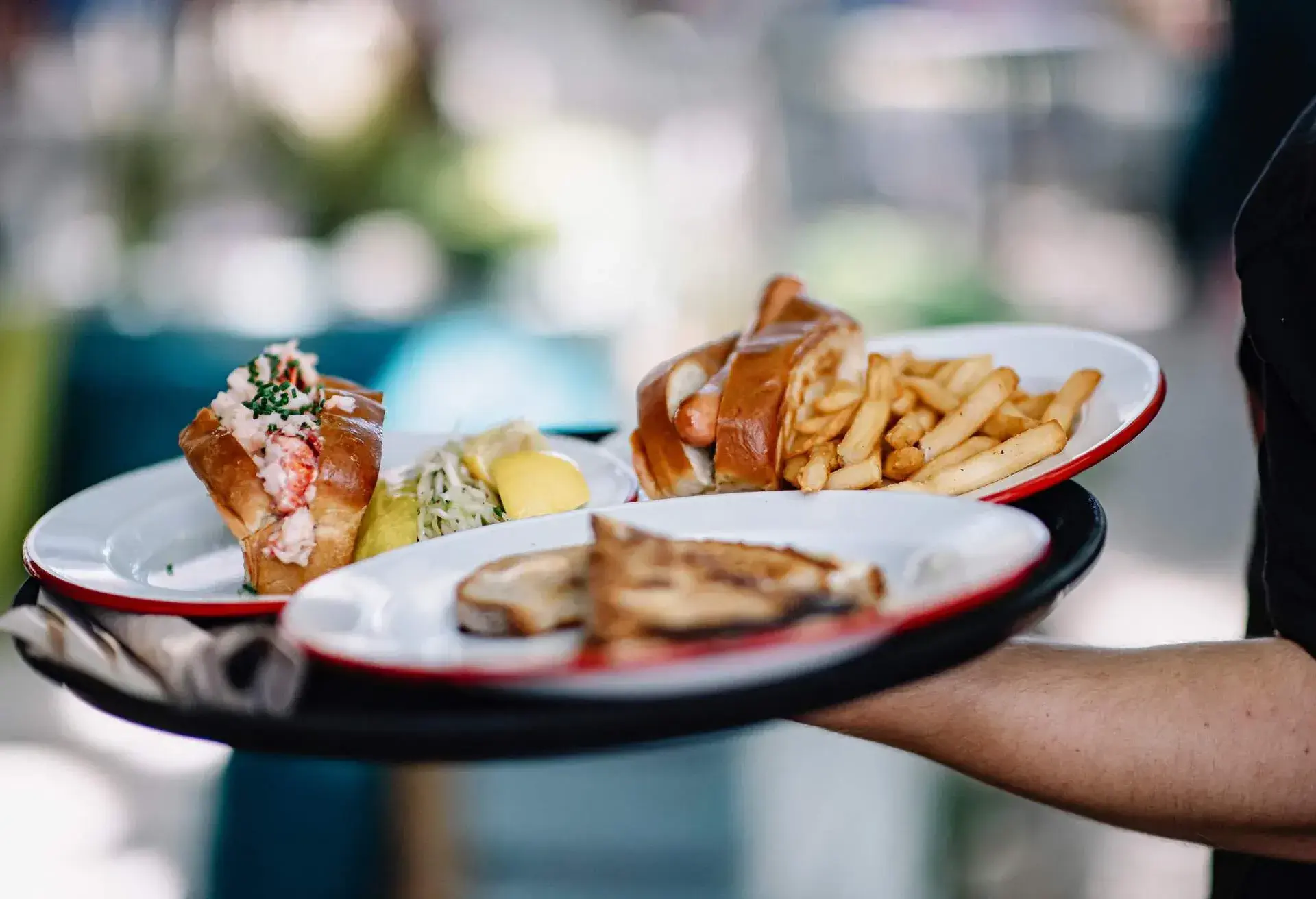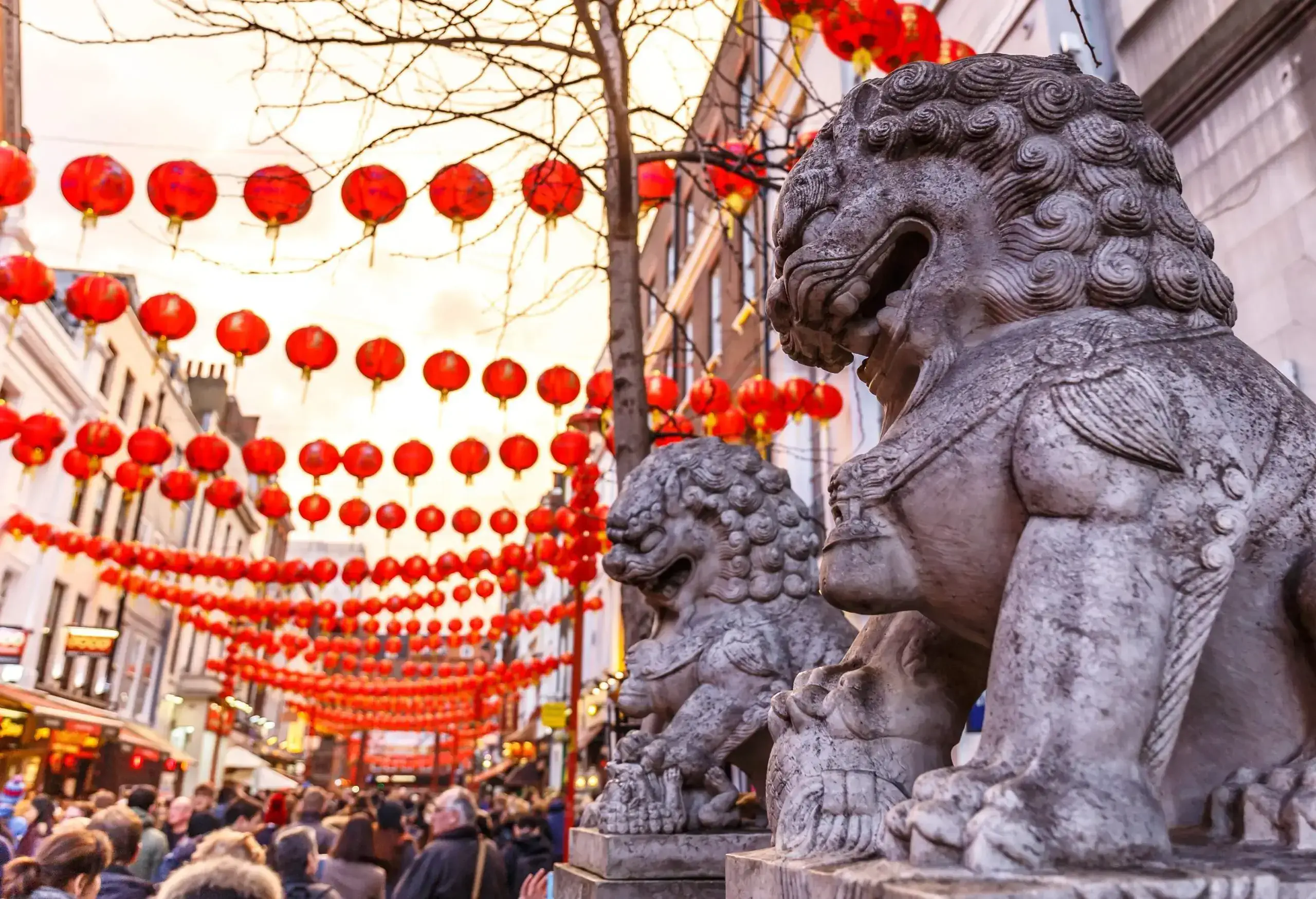If the thought of street food in China invokes images of warm nights on the back of either a tuk-tuk or motorbike and bustling streets with tongue-tingling aromas, then you aren’t far off. Just mix that in with early morning fog mingling with steaming pots from street stalls preparing popular breakfast dishes, such as bao buns. If you need a reason to pack a bag for China, it may as well be its street-food culture, which is among the top in the world.
From the Naluoguxiang night market in Beijing to Yau San Street in Hong Kong, the places to sample street food are varied and unique. With regional variations, many of these foods have also made their way into the top restaurants in China. In Xian, for example, you can feast on an elaborate version of the popular jiaozi, a Chinese dumpling, in such opulent surroundings to make you feel like a member of an imperial dynasty.
Street food in China
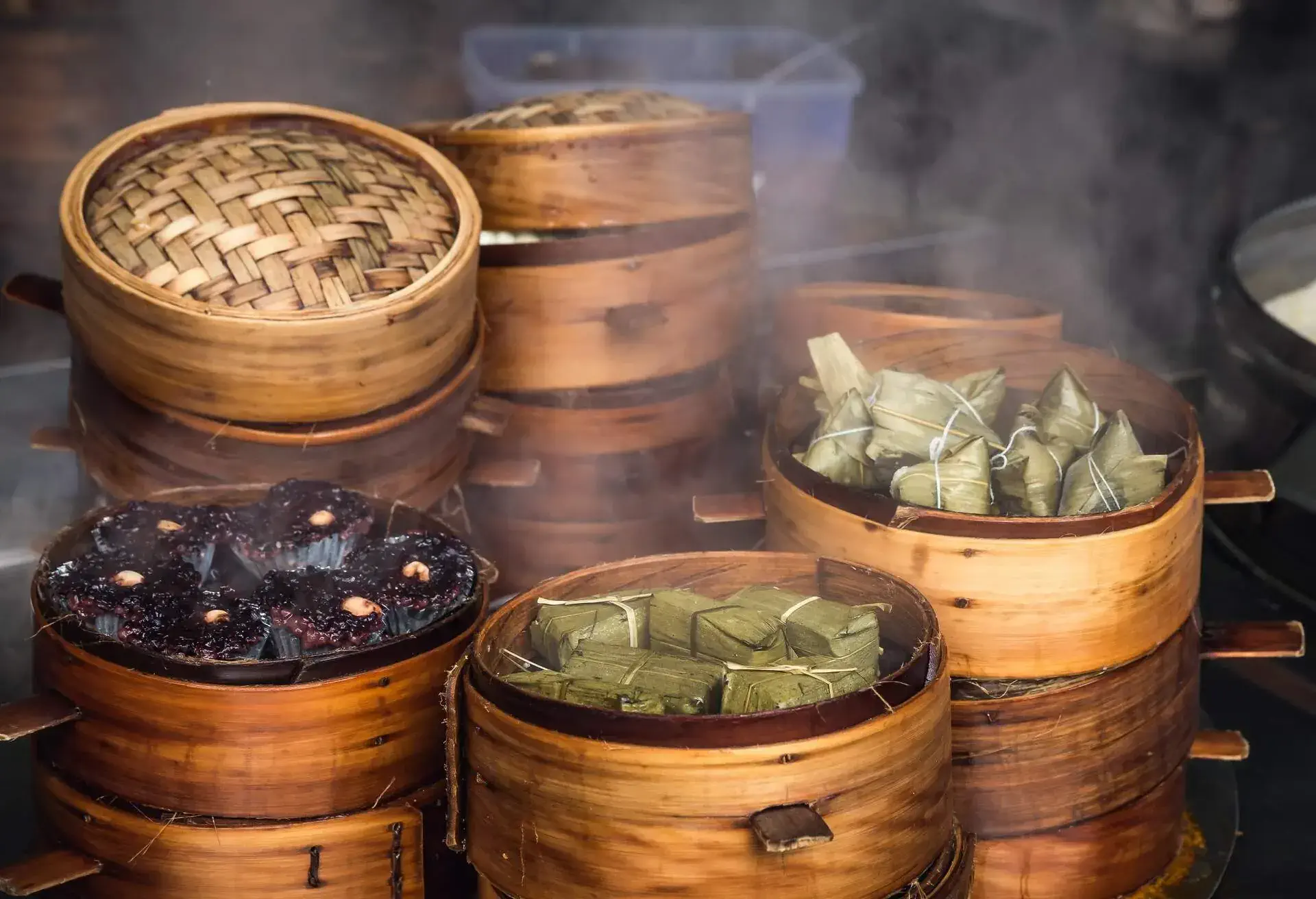
One of the best ways to tour China is by eating your way through its streets. The street food in China is a history and sensory lesson you will find nowhere else. As you eat your way through mouth-watering dumplings and sweet and sour sticky treats, you’ll discover traditions handed down centuries. Given its expanse, one would require volumes of books to sufficiently cover it all but below is a tester of what awaits you.
Jiaozi – Chinese dumplings
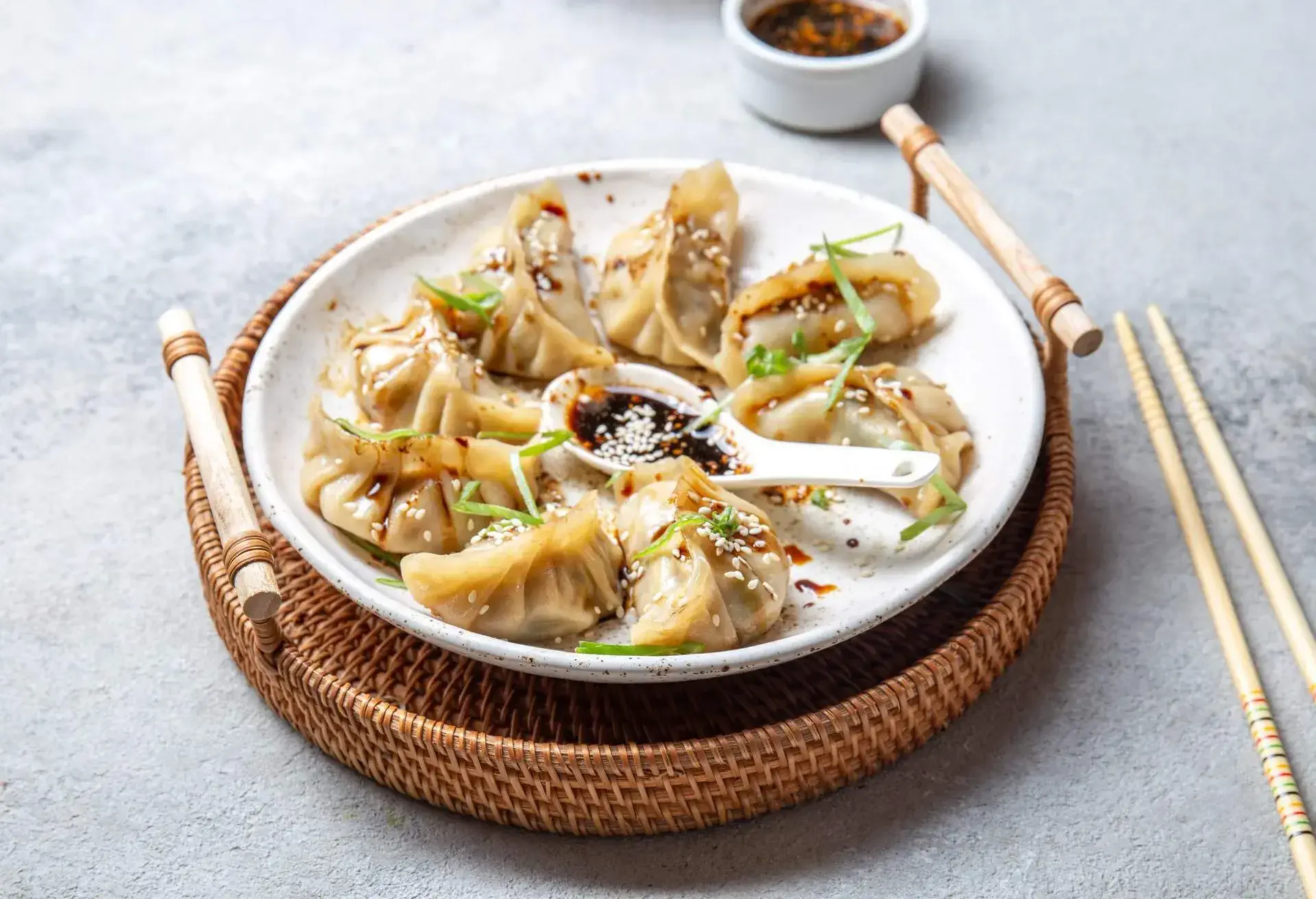
Perhaps the emblem of Chinese street food, Chinese dumplings – jiaozi – are ubiquitous. You will find them everywhere from train stations, street stalls, lively squares to some of the best restaurants, no matter where you are in China. Made from a thin dough filled with pork, or cabbage, they are moulded into a crescent-like shape before cooking.
The shape itself is quite significant as it is thought to bring good luck, hence is a must at any Chinese New Year festivities, even though you’ll find it eaten all year round. Stories go that it may have originated during the Ming Dynasty, which introduced paper currency, the Jiao zi, hence families started making their dumplings in that shape as a wish for prosperity and good health in the coming year. Before that, they’d been shaped like ears and were eaten in a broth, which they still are to this day, for medicinal purposes.
For one of the most authentic, if not mind-blowing, experiences, head to the city of the Terracotta Warriors, Xiang. The city is famed for its jiaozi banquets, of which there are five different banquets to pick from, each including dumplings with up to 108 different fillings. These range from exotic fillings such as bird’s nest and shark fin, to more ordinary ones, such as pork or beef. Enjoy it at the Shaanxi Grand Opera House accompanied with a Tang Dynasty music and dance show.
Xian Bing – Xian pancake
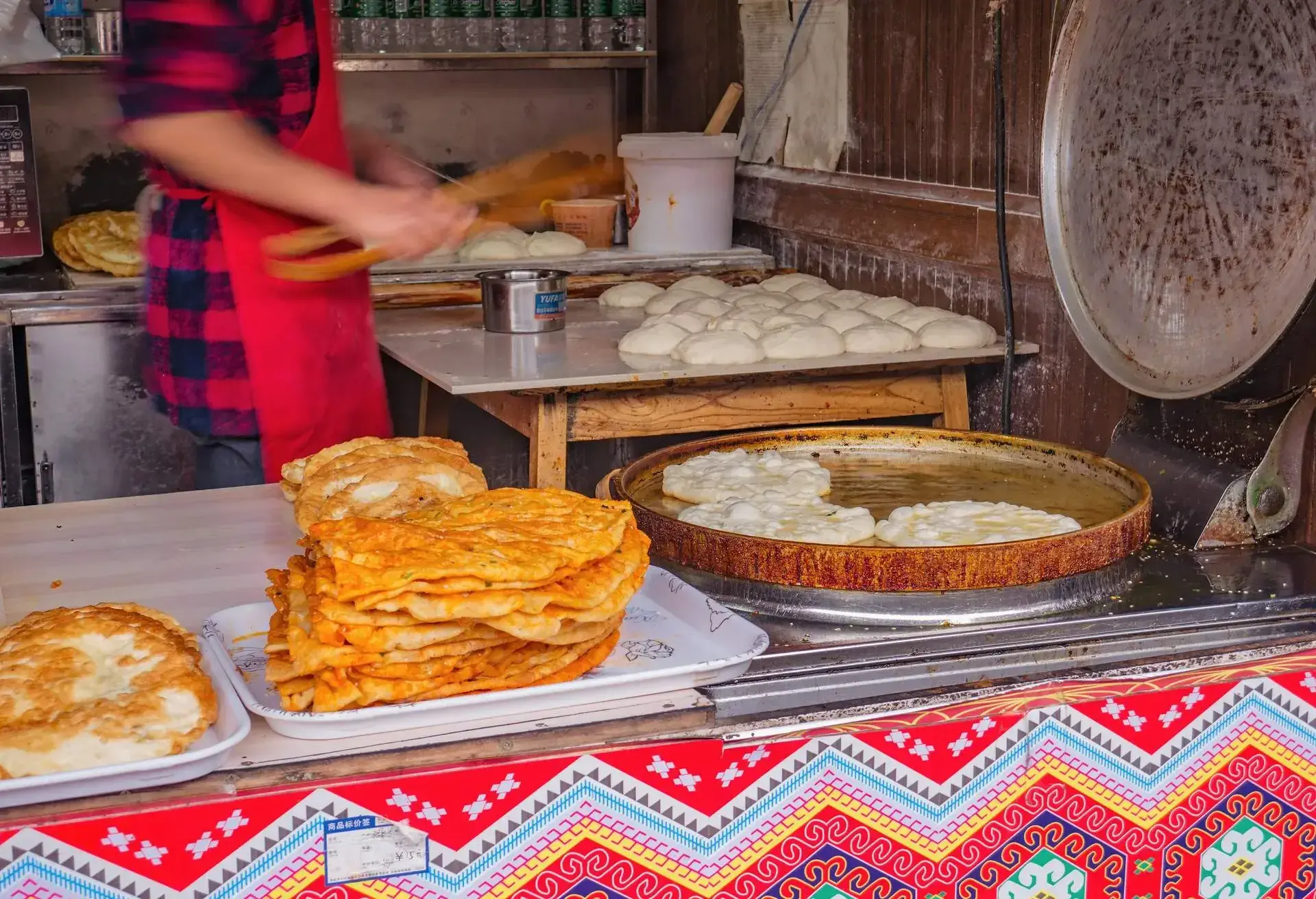
Originating from Xian, the Xian Bing is a cross between a pancake and a pan-fried pie, probably because of the amount of stuffing it contains. In essence, it is a flat, rather large, stuffed, fried dumpling. Characteristic of Northern Chinese Muslim halal cooking, fillings will generally include minced beef, cabbage, ginger, and spring onions mixed with a dash of rice wine. It is of course now possible to find other types of filling, such as pork or lamb.
Though its origins aren’t very obvious, the Muslim quarter of Xian was once a major stop on the ancient Silk Road, so it’s not surprising different cultures may have had an influence on the food here. Located just behind the Bell Tower, this is where to head to for your scrumptious Xian Bing, usually served with a soy or garlic sauce, or rice wine vinegar.
Jianbing – Chinese crepe
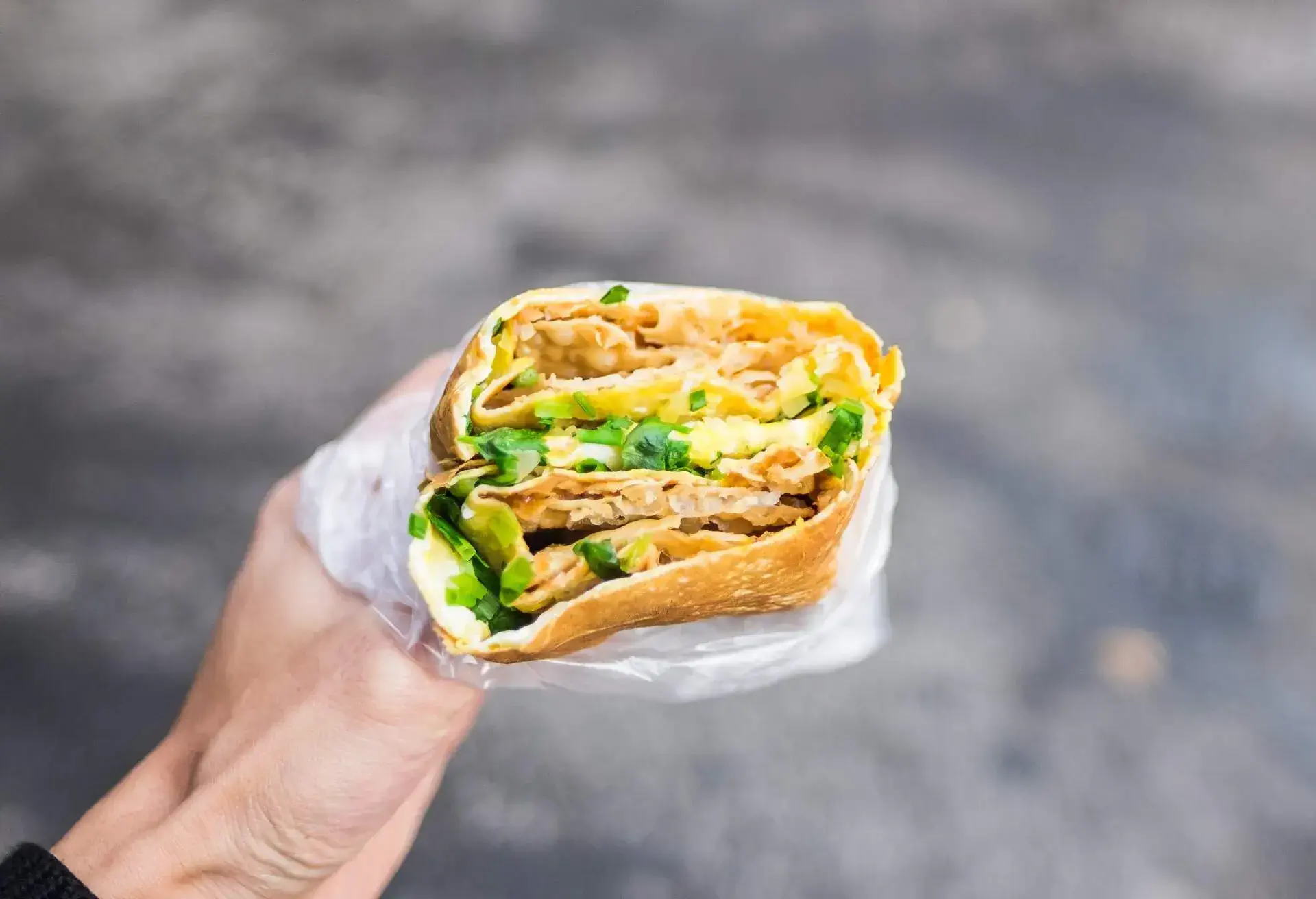
Travel to Beijing to witness the art of making a similar pancake, the Jianbing. Watching this delicious crepe, dating back almost 2000 years, made at the many street stalls is a cultural revelation. A thin grain and wheat flour batter is slathered onto a spinning hotplate, onto which an egg is cracked and spread out before a dash of various sauces such as black bean and sweet bean paste is added. It’s then folded into an envelope with a bai cui, a crispy cracker, added on, then a lettuce leaf, coriander, and spring onions before the last fold is made.
You will often find it with dark specks running through it, a result of black sesame seeds added to the batter. One of Beijing’s popular breakfasts, it’s a crispy and delicious snack to either start your day with, or end it after seeing the sights of Beijing.
Baozi
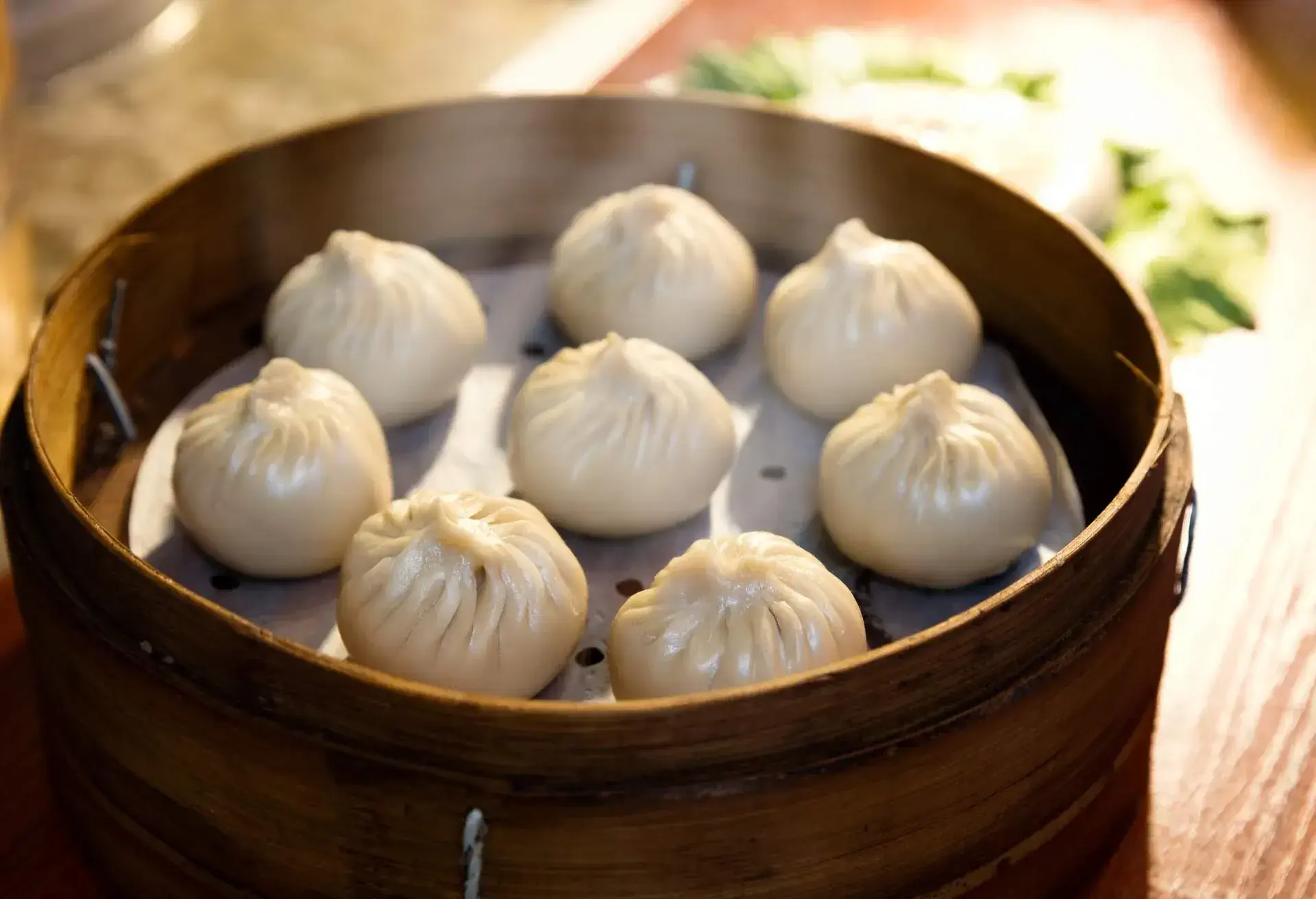
Another popular breakfast on the streets of China is baozi, or bao bun as it’s commonly referred to. A Chinese steamed bread, it’s made using a similar dough to that of the jiaozi but its heavier, leavened and usually steamed in bamboo baskets. It’s so popular you’ll often encounter queues of both locals and visitors alike wherever you go; don’t hesitate to join in. What you’ll get when your time finally comes is a Char Sui, one filled with BBQ pork as found on street corners in Hong Kong. If you’re in Shanghai, you’ll most likely be served a smaller version packed with minced meat going by Xia Long bao. Other fillings encased by this tasty warm and fluffy roll are red beans, all often served with a steaming bowl of broth of choice.
Formerly regarded as peasant food, it’s popular with both street vendors and tops many a high-end restaurant.
Huo Guo – Hotpot
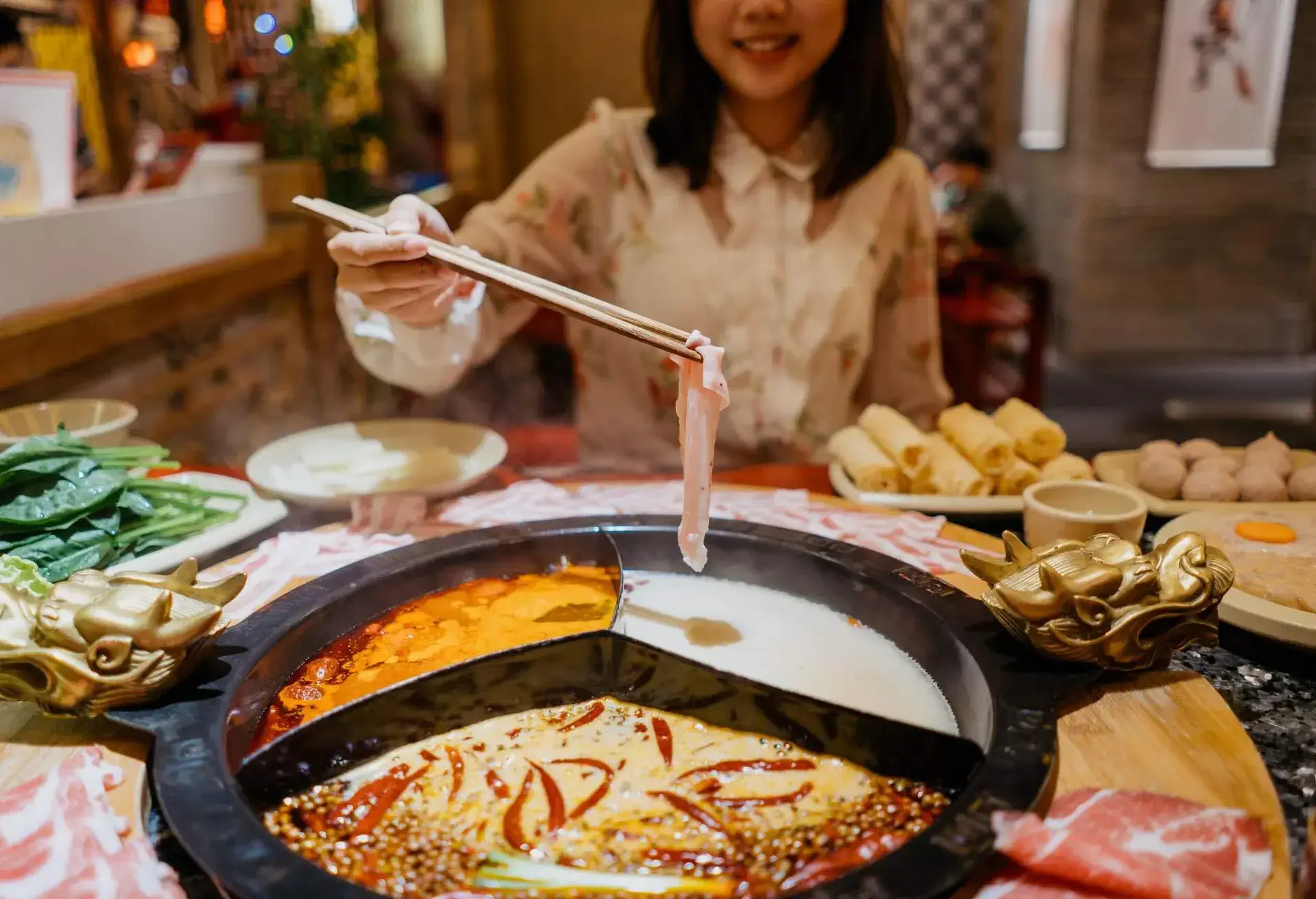
With origins from Mongolia circa the 10th or 11th centuries, huo guo found its way to Sichuan before spreading to other regions of China. A pot of steaming broth is placed in the middle of a table with a choice of meats and vegetables, which you dunk into to enjoy. It’s a bit like cooking your own meal with friends around a table. Quite similar to either a raclette of cheese fondue, this one comes with a warning: it’s hot. Though there are many variations everywhere you travel to in China, the mother of all hotpots is the Chongqing ma la, the Sichuan hotpot. As the name suggests, it originates from Sichuan and, being known for its peppers, it’s fiery hot.
This is a great way of enjoying a meal out with friends. Do observe the etiquette when partaking; take turns in dipping in, don’t mix the hot and mild sauces and, most of all, eat what you put in. You don’t want to short-change others.
Rou jia mo – Chinese burger

Now if you’re missing a burger on your travels, don’t despair, Chinese street food has that angle covered too. Here they come in a much thinner bun that’s flavoured with gravy and chilli paste instead of your average mustard or ketchup and the meat is shredded. The Rou jia mo is a yummy and unique burger. Like many foods, each vendor and region has their own take on fillings and seasoning.
In the Shaanxi Province, what’s commonly served is the Lazhirous jia mo, which uses pork gravy. Whereas if you are in the Autonomous Regions of Ningxia Hui, you’ll be served the Yangrou rou jia mo, which uses lamb.
Youtia
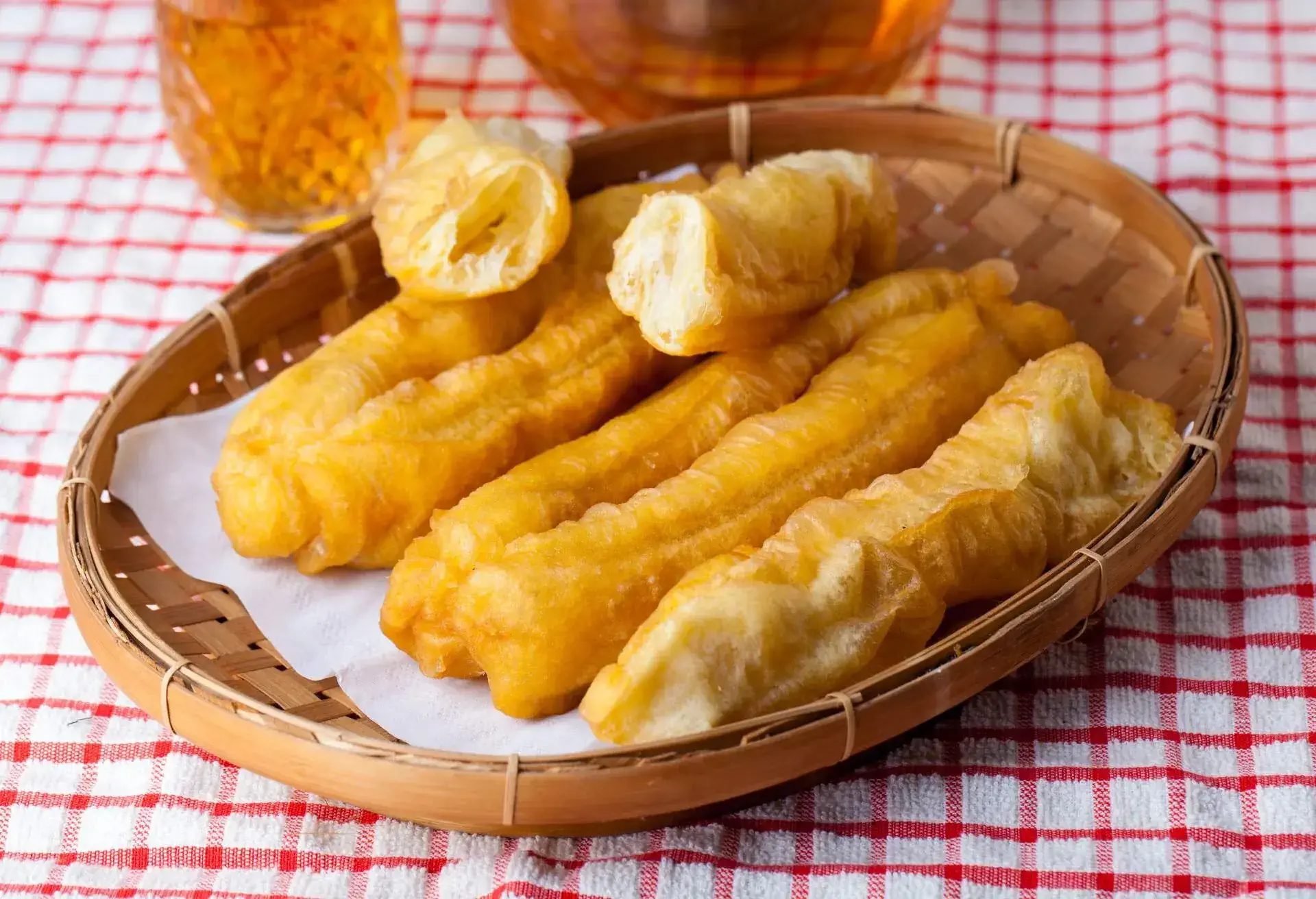
One of the most popular breakfasts to enjoy on the streets of Beijing is the youtiao. Almost a cross between a churro and a doughnut, it’s made by stretching a slightly salted soft dough before deep frying it to produce a crispy outer shell with a fluffy inside. For proper sustenance that will keep you going for most of the day before you hit your next pit stop, dunk it into a bowl of rice porridge. However, if you want a truly authentic one-off experience, have it with a tea egg, which is exactly what it says: eggs cooked in tea and spices and is utterly delicious.
Bing Tanghulu
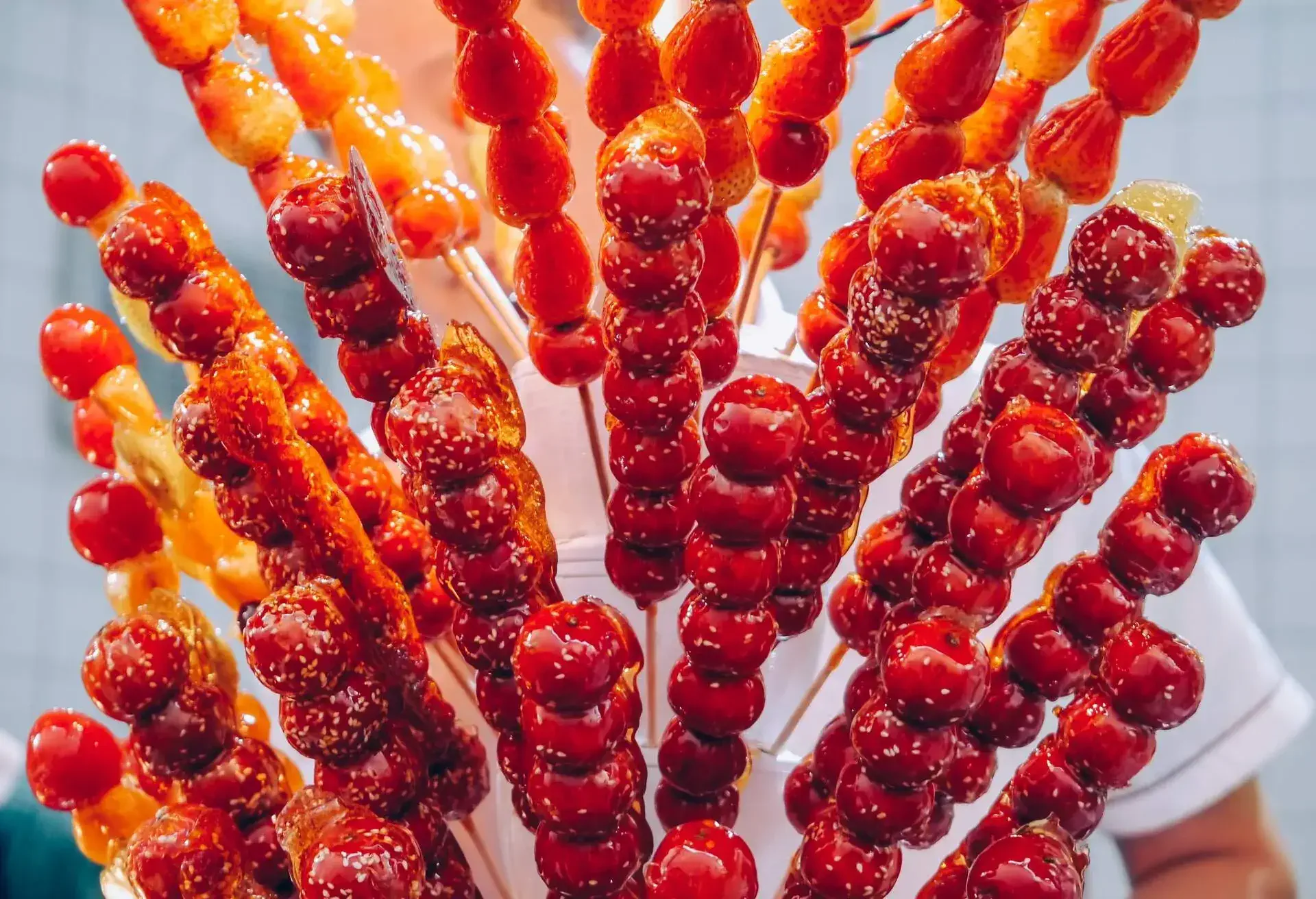
There are of course some sweet street undertakings that are worth mentioning on our list of the ultimate street foods in China. A good example of a popular Chinese sweet street food is the bing tanghulu. Similar to a candy apple, it’s made using Chinese hawthorn, which is rather tangy, but with the addition of sugar syrup, renders it both sweet and sour. This crunchy and tasty morsel can be found on street corners everywhere across China, using various fruit such as strawberries, but in Beijing, haws are most popular.
Put Chai Ko
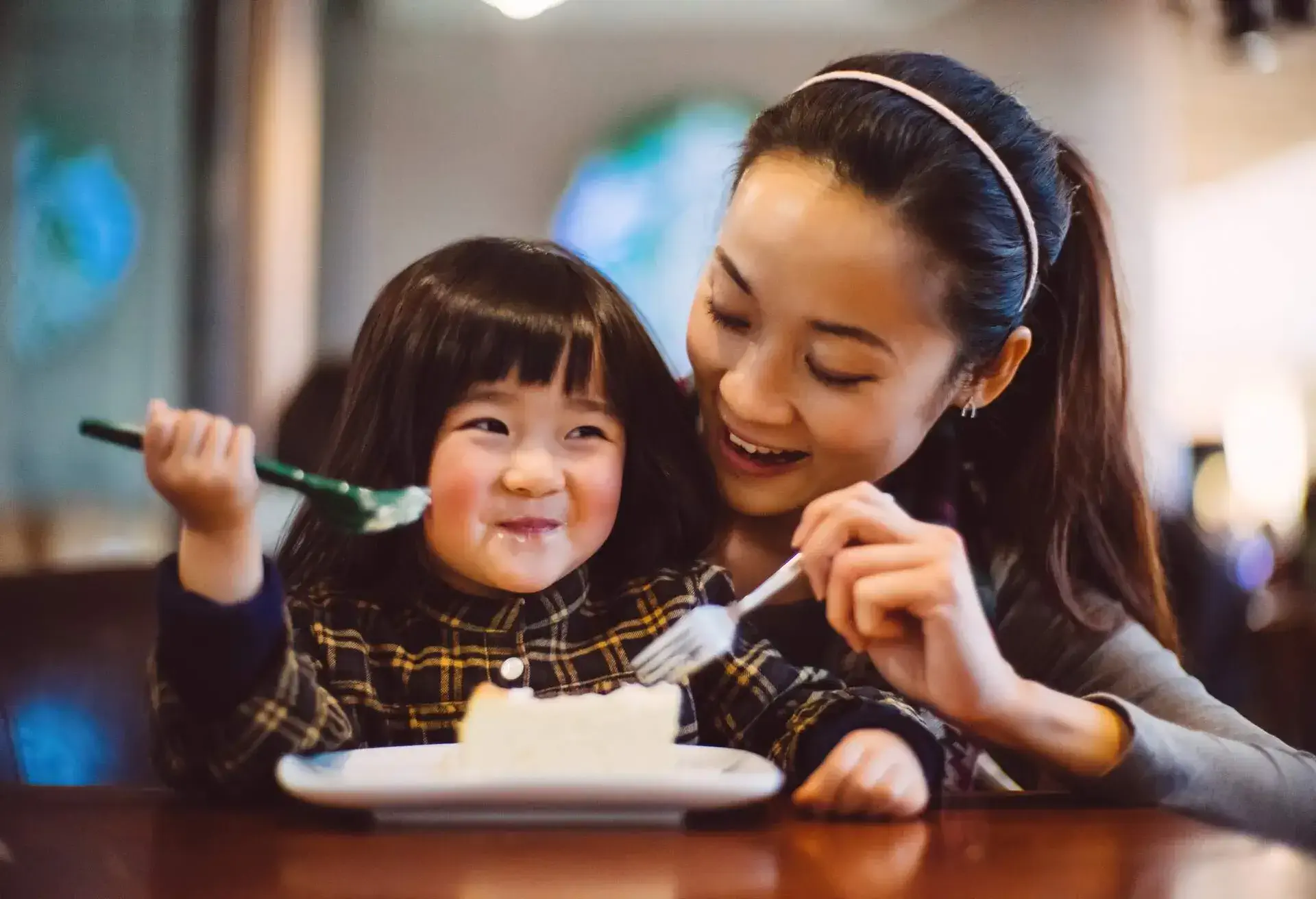
In Hong Kong, sweet street treats come in the form of the put chai ko. A steamed treat made with cooked beans mixed with brown sugar, rice flour and corn starch. It used to be steamed in earthenware pots in the old days but is now steamed on either aluminium cups or plastic bags and classically served in a porcelain bowl or on two bamboo sticks like an ice lolly.
Hammered nut candy

In the street food areas of Xian, all the methodical hammering sounds you’ll often hear are caused by vendors making a popular sweet treat: the hammered nut candy. A method initially used to preserve various nuts has resulted in popular sweets and a street show that has many stopping to take videos. The vendor repeatedly folds and stretches spun sugar to achieve a pliable consistency before it’s handed over to the pounder who repeatedly pounds it into warm hardened candy submission. Nuts are then added to it before it’s cut into pieces and sold. It’s a street show of mastery at work.
Are you an avid foodie planning your next trip to Italy? Then this article on Italian street food should be your guide on what to eat where. If, however, you are in Sardinia and are wondering what, from the array of foods on offer, you need to try then check out the eight best traditional Sardinian foods to try. You can read about the food markets in Madrid here to be equipped for your next trip. Of course, Greece does have some incredible food too, as this article on the best foods in Greece highlights.




